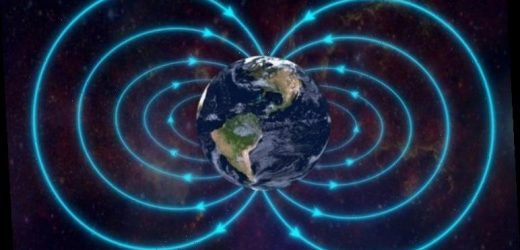NASA scientists explore the ‘anomaly’ in Earth’s magnetic field
When you subscribe we will use the information you provide to send you these newsletters.Sometimes they’ll include recommendations for other related newsletters or services we offer.Our Privacy Notice explains more about how we use your data, and your rights.You can unsubscribe at any time.
Earth’s magnetic field not only protects our planet and its life from deadly solar radiation, but it keeps north at the top and south at the bottom of the planet’s poles. The shield is created by the liquid iron outer core of our planet spinning around the solid inner core. The dynamic action creates an invisible field which goes through the north and south of the planet and encircling it, which leads to the Earth’s North and South Poles.
Many species of animals, most notably birds, have a sense for the magnetic poles which allow them to successfully navigate the globe during periods of mass-migration, leading experts to fear that it could cause confusion.
The shield also keeps us protected from cancer-causing solar rays and humans have grown to rely on the magnetic field more and more as we increase our independence on things like satellites which we use for navigation, mobile phones and satellite TV – to name just a few examples.
In recent years, scientists have been gearing up for a potential flip in the magnetic field – a natural phenomena which occurs every 200,000 to 300,000 years when the north and south poles switch.
The poles attempted to swap 41,000 years ago, but the process was not a complete success and the reversal was only temporary.
The last time the poles switched permanently came 780,000 years ago, meaning we could be long overdue.
Scientists know when the poles have flipped by analysing rocks.
As new rocks form, usually though lava flows or ocean sediment being dumped, they record the magnetic field at the time, which is what geologists used to date the last magnetic field reversal.
Now, a scientist has warned that when the next flip happens, it could be devastating to our planet.
Agathe Lise-Pronovost, a research fellow in Earth sciences at the University of Melbourne, wrote in an article for the Conversation: “Earth’s magnetic field acts as a shield against high-energy particles from the Sun and outside the solar system.
“Without it the planet would be bombarded by these charged particles.
“We don’t know when the next geomagnetic excursion will happen. But if it happened today, it would be crippling.
“Satellites and navigation apps would be rendered useless — and power distribution systems would be disrupted at a cost of between US$7 billion and US$48 billion each day in the United States alone.
DON’T MISS
Solar winds prefer to hit the North Pole, reveals new ESA study
Milky Way rattled by gamma-ray cosmic eruption
Earth’s magnetic field is weaker over the Atlantic and it’s growing
“Obviously, satellites and electric grids didn’t exist 41,000 years ago.
“But the Laschamp excursion — named after the lava flows in France where it was first recognised — still left its mark.”
Researchers have become better at identifying elements in soils and rocks which indicated when the last magnetic switch occurred, such as finding an isotope called beryllium-10 at the bottom of Australia’s Lake Selina.
Beryllium-10 is created when high-energy cosmic particles bombard Earth, colliding with oxygen and nitrogen atoms in the atmosphere.
A weaker magnetic field leads to more of this isotope, which is an indicator of the last switch.
Ms Lise-Pronovost continued: “More data from lake sediments, archaeological artefacts, lava flows and mineral cave formations, including stalagmites and stalactites, could greatly improve our understanding of Earth’s magnetic field.
“With this knowledge, we may one day potentially be able to predict the next geomagnetic excursion, before our phones stop working and the birds overhead veer off-course and crash into windows.”
Source: Read Full Article







